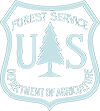History of Wildland Fire in the Southeast
Fire has long played a critical role in the landscape and ecosystems across the Southeast. Early colonists who arrived on the land that would become the U.S. commented on the Native Americans' extensive use of wildland fire to achieve several land management objectives, including hunting habitat, travel, and protection. This frequent fire use helped shape the landscapes colonists experienced upon arrival, such as the iconic longleaf pine ecosystem.
Periodic wildfires occurred from both lightning and human-originated ignitions and were allowed to burn until they extinguished themselves. Oftentimes, the same landscape would burn about every 3 to 8 years. A lack of organized fire suppression resources allowed this periodic burning to occur, and residents accepted it as a normal part of their lives. The majority of forests in the Southeast are fire-dependent ecosystems which thrived from the periodic burning.
Wildland fire continued to be used as a management tool in the U.S. as the nation grew. By the early 20th century, the U.S. government became concerned that fire limited forest regeneration and health, and began an extensive fire prevention campaign in 1944. Smokey Bear was the symbol of this campaign, stressing to the public that “only you can prevent forest fires!” This widely promoted prevention campaign caused fire to be excluded from forests, leading to a buildup of hazardous fuel, with landscapes and ecosystems being fragmented or lost.

- Credit: By Forest Service, United States Department of Agriculture, in cooperation with the Association of State Foresters and the Advertising Council [Public domain], via Wikimedia Commons
Even though fire exclusion had undesirable effects, such as more catastrophic wildfires, the prevention campaign continued. The increased occurrence of catastrophic wildfires, cost of suppression activities, and loss of natural resources and homes eventually led to wildland fire policy changes.
These changes were an attempt to educate the public that all fire in forest is not bad, and that fire is a valuable tool in restoring and maintaining the healthy forests and fire dependent ecosystems and landscapes as they should exist across the entire U.S.
Wildland fire management in the Southeastern US is complex and multi-faceted. The significant threat posed by unplanned or undesirable fires threatens the lives and well-being of emergency responders and the public; damages or destroys homes and property, results in loss of marketable forest products, and can have undesirable effects in the natural environment. Although the Southeastern region includes just thirteen states, the Commonwealth of Puerto Rico and the U.S. Virgin Islands, it leads the nation in the number of annual wildland fire ignitions. This management challenge is exacerbated by rapid population growth, rapid expansion of wildland urban interface (WUI) areas, and the fragmentation of land ownership in the region.
In 2011, ten firefighters lost their lives during fire management in the Southeast (NIFC 2011). During that same year, in Texas alone, 3,993,716 acres were burned by wildfires, with 5,738 structures destroyed, including 2,946 homes (Texas Forest Service 2012). Wildfire threat to homes is consistently above average due to the number and density of homes throughout the Southeast.
Over the past decade, population growth in the Southeast has outpaced any other region in the country. According to the 2010 U.S. Census, the South's population grew 14.3 percent between 2000 and 2010 to reach 114.6 million inhabitants at the end of the decade. As of 2010, six of the ten fastest growing counties were in Southeastern states along with a total of 36 percent of the nation's population (U.S. Census Brief, 2010). In the past, the southeastern fire and land management community has relied on cultural and historical acceptance of prescribed fire to facilitate their implementation of appropriate management activities.
New residents, however, are often unfamiliar with the use of fire as a valuable management tool. This population and an accompanying significant demographic shift, along with other factors, are creating new challenges for the fire management community. It is increasingly more difficult for agencies, organizations, and landowners to plan for and respond effectively to wildfire, while protecting vulnerable WUI communities and providing for firefighter safety. The Southeast has a complex fire environment unlike any other in the nation, with interrelated critical controlling factors influencing wildland fire management:
Wildfire Activity: Between 2001 and 2010 nearly half of all national ignitions and over 40 percent of the country's large wildfires occurred in the Southeast.
Large and Rapidly Expanding WUI: As of 2000, more than half of WUI acres were located within the Southeast.
Smoke Management Challenges: Smoke impacts safety, health, and quality of life. Smoke-related impacts challenge the fire management community to implement management and response activities safely.
Year-round Fire Season: wildland fires burn all 12 months of the year in the Southeast, stressing firefighting capacity and resources.
Area Protected: Over 420 million terrestrial acres are protected from wildfire by federal, Tribal, state and local agencies with just under half (200 million acres) being forested lands.
Privately Owned Forestland: Nearly 90 percent of forestland in the Southeast is owned by over five million private landowners.
Prescribed Burning: The Southeast leads the nation in prescribed burn acres accomplished on silvicultural land; but issues related to capacity, smoke, and liability are significant obstacles to encouraging practitioners to increase prescribed burning. Prescribed fire must occur at a much greater frequency than elsewhere in the country as a result of the region's rapid vegetation regrowth rate.
Invasive Species: Many invasive species spread quickly after a wildfire event, contributing to fuel loading and otherwise influencing forest health (e.g., cogongrass (Imperata cylindrica) spread).
Working Forests: Traditional and new economically viable forest markets support local economies, help curb hazardous fuel accumulation, and serve as a source of local wildfire knowledge, but the long-term strength of these markets is unknown
Strong Interrelationships in the Fire Management Community: An extensive history of excellent cooperation and working relationships exists between agencies, organizations, and local fire departments with other wildland fire management organizations, resulting in a safer, more effective response and collaborative planning for future occurrences.
Fire Departments: An extensive network of fire departments, including mostly volunteer fire departments, are responsible for most initial response to wildfires throughout the region.












